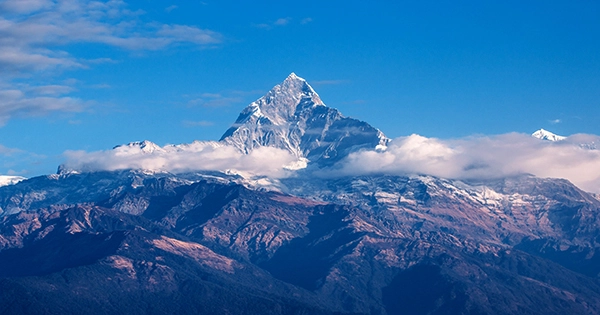Rocks formed near the base of the highest mountains are unlike those generated under any other environment. Giant mountain ranges high enough to produce these rocks spanned nearly 8,000 kilometers (5,000 miles) across whole supercontinents twice during Earth’s history, according to experts. This would be the same as if the Himalayas stretched from Berlin to Bangkok.
These “supermountains” roughly coincide with two of evolution’s most important eruptions, which may or may not be a coincidence. Although garnets can be generated in various ways, they are only abundant at pressures more than 1.2 Gigapascals, which necessitates a downward pressure of 45 kilometers in the Earth’s crust.
With that much crust, you have a mountain range with an average height of more than 6 kilometers, interrupted by peaks that are even higher. Only the Himalayas now fit the criterion. Other similar ranges have existed in Earth’s history, leaving a legacy in the rocks created at their base. One of these, known as the Transgondwanan Supermountain, spanned 8,000 kilometers along Africa’s east coast between 650 and 500 million years ago.
A team from the Australian National University put together data in Earth and Planetary Sciences Letters to suggest that a range existed 2 billion to 1.8 billion years ago that reached for a similar distance, which they termed the Nuna Supermountain. They believe that the emergence and fall of these supermountain ranges played a key role in the evolution of life on Earth.
Around 2 billion years ago, eukaryotes, the sophisticated cells that gave rise to animals and plants, first evolved, and the Cambrian explosion, when the majority of major animal groupings first appeared in the fossil record, happened 541-530 million years ago. As mountains disintegrate, some of the elements generated in their roots rise to the surface, according to PhD student Ziyi Zhu. The garnets themselves change throughout time, making it difficult to date them precisely.
Zircons, on the other hand, are created under the same conditions and are prized by geologists for their ease of dating and ability to retain their original shape. When zircons form among numerous garnets, they have a specific trace: the garnets preferentially absorb Lutetium, leaving zircons uniquely depleted in that element. Low-Lutetium zircons from the same time period were discovered in Canada, Siberia, North China, and Central India, according to Zhu and co-authors. These places are now dispersed over the world, but they formed a line across the then-forming supercontinent Nuna during the time.
Mountains that are higher in elevation disintegrate at a considerably faster rate than those that are lower in elevation. Rapid erosion releases a flood of nutrients like phosphorus into the oceans and is thought to raise atmospheric oxygen levels. Geologists disagree over whether the Cambrian explosion was caused by the erosion of the Transgondwanan Supermountain. Nuna may have done the same, according to the authors. “What’s amazing is how well-preserved the entire history of mountain construction is. In a statement, co-author Professor Jochen Brocks stated, “It reveals these two large spikes: one is tied to the development of animals, and the other is linked to the formation of complicated big cells.”
According to Zhu, the link is still hypothetical. She’s received communications in the days since the paper’s publication saying that the timing of the emergence of macroscopic cells is unpredictable, making it difficult to link to Nuna. “We need more paleontologists to work on this,” she remarked. “We are merely presenting our observations,” Zhu told IFLScience, “and we don’t know why the development of the Nuna and Gondwana supercontinents produced such epic ranges but not Rodinia and Pangea.”
The extent of the ocean basin swallowed up when the continents close together, according to the paper, could be critical. Although such supermountains would have swamped the Himalayas in terms of the number of peaks approximately 8 kilometers high, Zhu told IFLScience that the research does not yet know if any of them were taller than Everest. “We want to see how high they went,” she explained. Mountaineers who think today’s mountains aren’t tough enough and desire to climb peaks that rise into the stratosphere may have just been born too late.
















